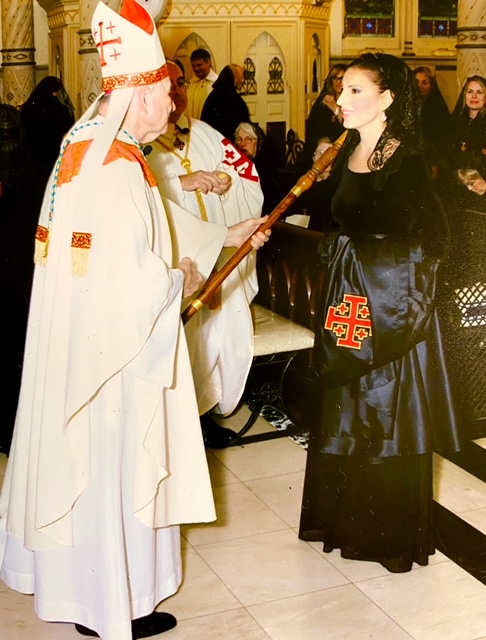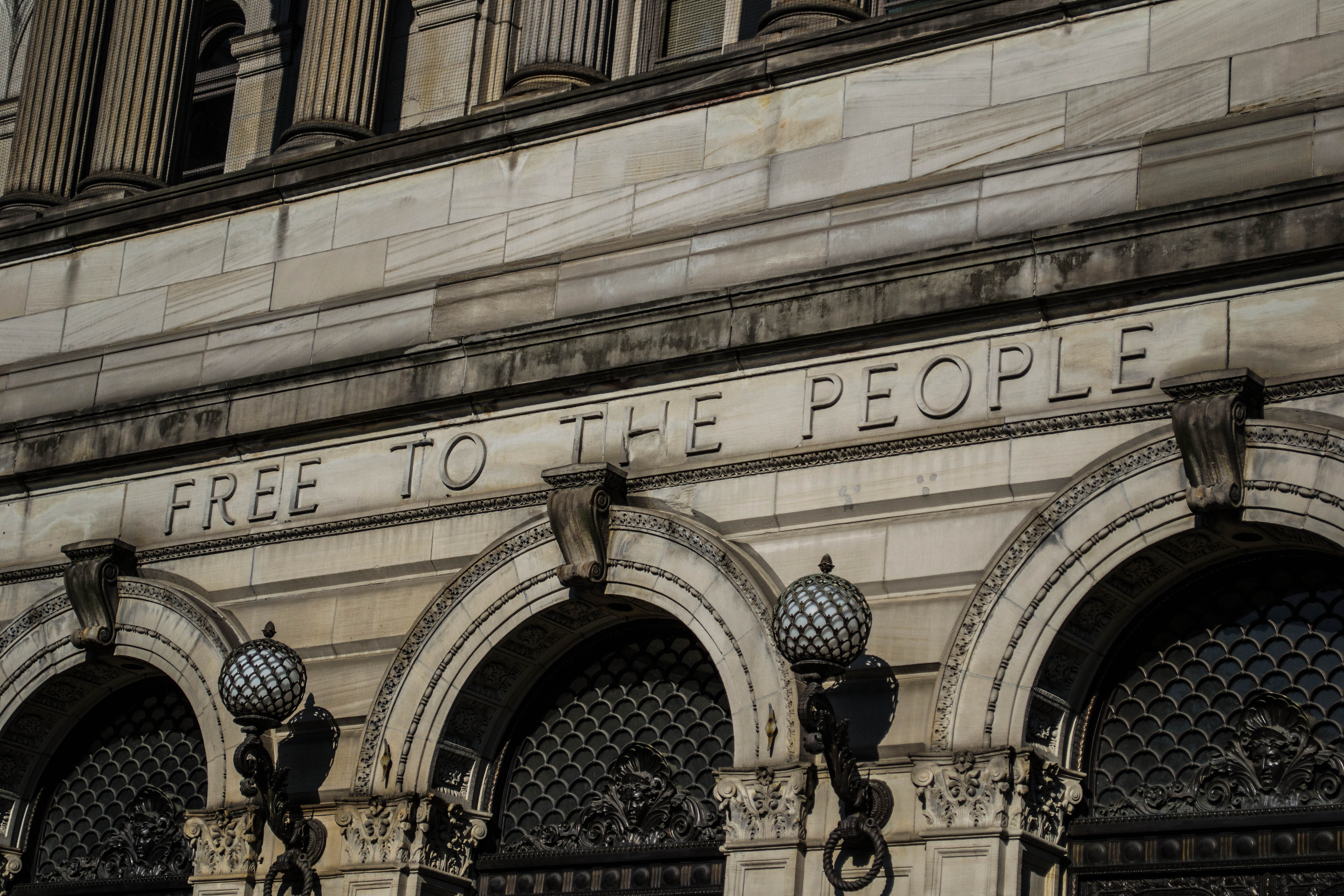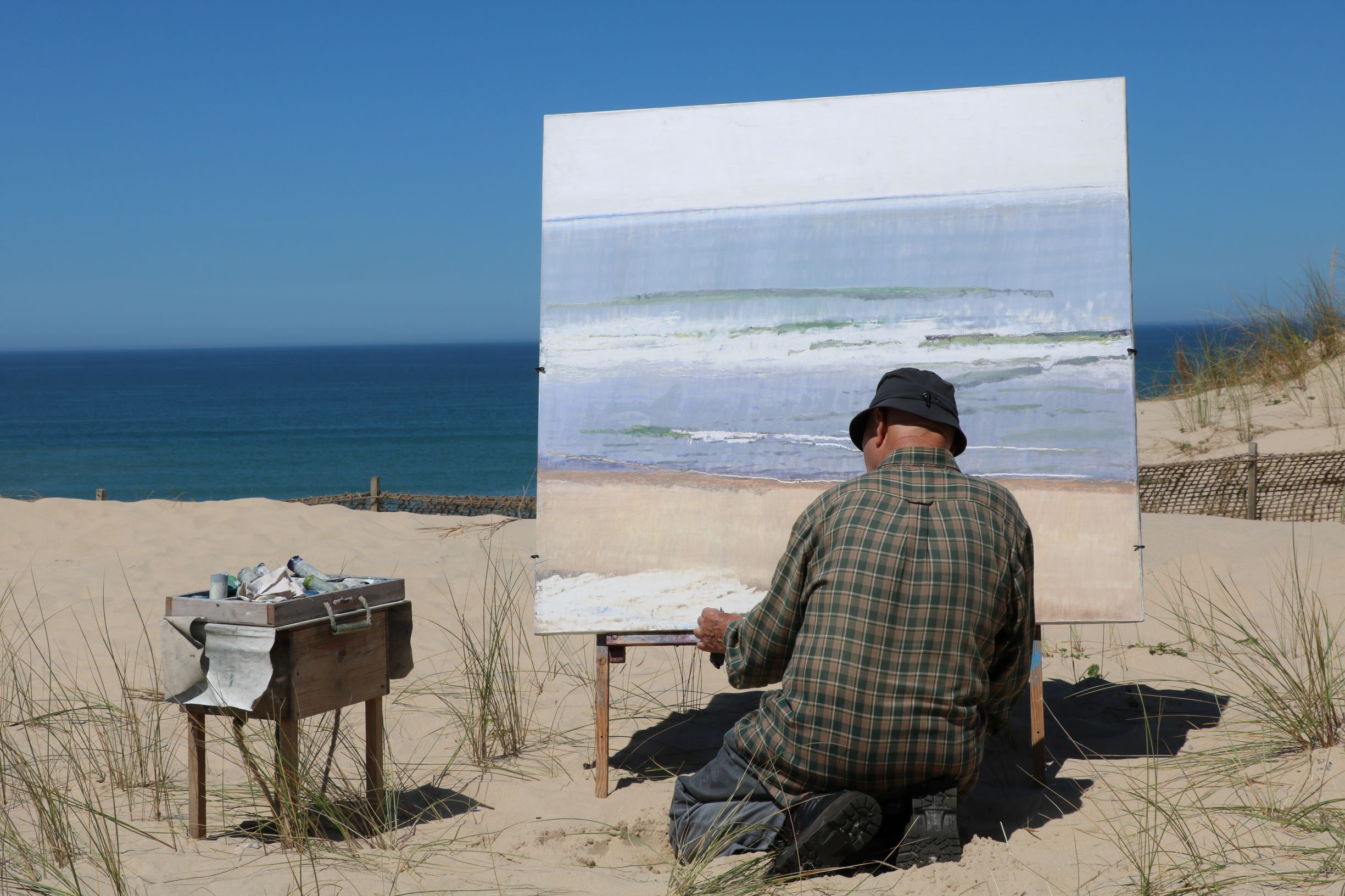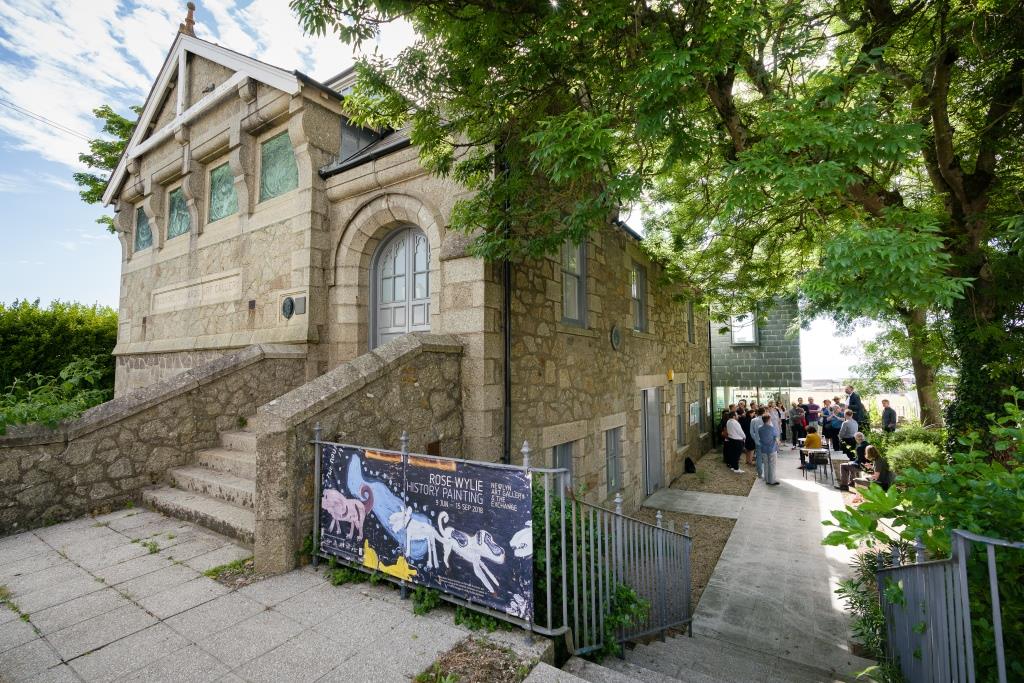|
Laura Knight
Dame Laura Knight ( Johnson; 4 August 1877 – 7 July 1970) was an English artist who worked in oils, watercolours, etching, engraving and drypoint. Knight was a painter in the figurative, realist tradition, who embraced English Impressionism. In her long career, Knight was among the most successful and popular painters in Britain. Her success in the male-dominated British art establishment paved the way for greater status and recognition for women artists. In 1929 she was created a Dame, and in 1936 became the second woman elected to full membership of the Royal Academy.The first was Annie Swynnerton, who was elected to full membership in 1922, although shortly afterwards her membership status was changed to 'associate' when it was realized she was over the normal cut-off age for full membership, 75, at time of admission. Her large retrospective exhibition at the Royal Academy in 1965 was the first for a woman. Knight was known for painting amidst the world of the thea ... [...More Info...] [...Related Items...] OR: [Wikipedia] [Google] [Baidu] |
Dame
''Dame'' is an honorific title and the feminine form of address for the honour of damehood in many Christian chivalric orders, as well as the British honours system and those of several other Commonwealth realms, such as Australia and New Zealand, with the masculine form of address being ''Sir''. It is the female equivalent for knighthood, which is traditionally granted to males. Dame is also style used by baronetesses in their own right. A woman appointed to the grades of the Dame Commander or Dame Grand Cross of the Order of Saint John, Equestrian Order of the Holy Sepulchre, Most Honourable Order of the Bath, the Most Distinguished Order of Saint Michael and Saint George, the Royal Victorian Order, or the Most Excellent Order of the British Empire becomes a dame. A Central European order in which female members receive the rank of Dame is the Imperial and Royal Order of Saint George. Since there is no female equivalent to a Knight Bachelor, women are always appointed to an ... [...More Info...] [...Related Items...] OR: [Wikipedia] [Google] [Baidu] |
Laren, North Holland
Laren () is a town and municipality in the province of North Holland, Netherlands. Located in the Gooi region, it is the oldest town in the area. Together with its neighbor Blaricum, Laren is one of the most affluent towns in the Netherlands. Nationally, Laren is well known for its history as a late 19th-century art colony, preserved in the museum Singer Laren, its retirement home for elderly artists Rosa Spier Huis, as well as its wide array of shops. Laren is part of the Amsterdam metropolitan area, situated east of Amsterdam. Government The municipal council of Laren consists of 15 seats, which since 2014 are divided as follows: Demographics In 2007, Laren had the following demographic data: *Birth rate: 7.29 per 1,000 *Death rate: 17.94 per 1,000 *NGR: -1.07% per year In August 2017, there were 11,135 inhabitants in Laren. The municipality has a population density of 897/km2 (2,320/sq mi). Notable residents The arts * Anton Mauve (1838-1888), painter, Hague S ... [...More Info...] [...Related Items...] OR: [Wikipedia] [Google] [Baidu] |
Pittsburgh
Pittsburgh ( ) is a city in the Commonwealth (U.S. state), Commonwealth of Pennsylvania, United States, and the county seat of Allegheny County, Pennsylvania, Allegheny County. It is the most populous city in both Allegheny County and Western Pennsylvania, the List of municipalities in Pennsylvania#Municipalities, second-most populous city in Pennsylvania behind Philadelphia, and the List of United States cities by population, 68th-largest city in the U.S. with a population of 302,971 as of the 2020 United States census, 2020 census. The city anchors the Pittsburgh metropolitan area of Western Pennsylvania; its population of 2.37 million is the largest in both the Ohio Valley and Appalachia, the Pennsylvania metropolitan areas, second-largest in Pennsylvania, and the List of metropolitan statistical areas, 27th-largest in the U.S. It is the principal city of the greater Pittsburgh–New Castle–Weirton combined statistical area that extends into Ohio and West Virginia. Pitts ... [...More Info...] [...Related Items...] OR: [Wikipedia] [Google] [Baidu] |
Carnegie Museums Of Pittsburgh
Carnegie Museums of Pittsburgh are four museums that are operated by the Carnegie Institute headquartered in the Carnegie Institute complex in the Oakland neighborhood of Pittsburgh, Pennsylvania. The Carnegie Institute complex, which includes the original museum, recital hall, and library, was added to the National Register of Historic Places on March 30, 1979. Portfolio Two of the Carnegie museums, the Carnegie Museum of Natural History and the Carnegie Museum of Art, are both located in the Carnegie Institute and Library complex in Oakland, a landmark building listed on the National Register of Historic Places (ref #79002158, added 1979). It also houses the Carnegie Music Hall and the main branch of the Carnegie Library of Pittsburgh. Andrew Carnegie donated the library and the buildings. With the goal of inspiring people to do good for themselves and their communities, the terms for donations required communities to support them in exchange for the building and initial ... [...More Info...] [...Related Items...] OR: [Wikipedia] [Google] [Baidu] |
Boskenna
Boskenna is an early medieval settlement and large 17th-century manor house (formerly with associated farms and cottages) in the civil parish of St Buryan, west Cornwall, England, United Kingdom. Nearby, to the south, is the valley and cove of St Loy and the site of St Loy's chapel which was on the Boskenna side of a stream. History It is first recorded as ''Boschene'' in the 13th or 14th century, and the house was enlarged and altered in the 19th century. Boskenna was the home of the Paynter family for centuries and the oldest part of the Boskenna house dates from 1678 and now forms its northwest wing. The prominent Jacobite James Paynter was from a junior branch of the Paynters of Hayle that settled at Trekenning House in St Columb Major parish. His Paynter relatives at Boskenna were also known to be Jacobite sympathisers and in 1745 villagers at St Buryan were convinced that the Paynter family were harbouring Charles Edward Stuart (the Young Pretender). In 1881 the estate was ... [...More Info...] [...Related Items...] OR: [Wikipedia] [Google] [Baidu] |
Plein-air
''En plein air'' (; French for 'outdoors'), or ''plein air'' painting, is the act of painting outdoors. This method contrasts with studio painting or academic rules that might create a predetermined look. The theory of 'En plein air' painting is credited to Pierre-Henri de Valenciennes (1750–1819), first expounded in a treatise entitled ''Reflections and Advice to a Student on Painting, Particularly on Landscape'' (1800), where he developed the concept of landscape portraiture by which the artist paints directly onto canvas ''in situ'' within the landscape. It enabled the artist to better capture the changing details of weather and light. The invention of portable canvases and easels allowed the practice to develop, particularly in France, and in the early 1830s the Barbizon school of painting in natural light was highly influential. Amongst the most prominent features of this school were its tonal qualities, colour, loose brushwork, and softness of form. These were variants ... [...More Info...] [...Related Items...] OR: [Wikipedia] [Google] [Baidu] |
Royal Academy
The Royal Academy of Arts (RA) is an art institution based in Burlington House on Piccadilly in London. Founded in 1768, it has a unique position as an independent, privately funded institution led by eminent artists and architects. Its purpose is to promote the creation, enjoyment and appreciation of the visual arts through exhibitions, education and debate. History The origin of the Royal Academy of Arts lies in an attempt in 1755 by members of the Society for the Encouragement of Arts, Manufactures and Commerce, principally the sculptor Henry Cheere, to found an autonomous academy of arts. Prior to this a number of artists were members of the Society for the Encouragement of Arts, Manufactures and Commerce, including Cheere and William Hogarth, or were involved in small-scale private art academies, such as the St Martin's Lane Academy. Although Cheere's attempt failed, the eventual charter, called an 'Instrument', used to establish the Royal Academy of Arts over a dec ... [...More Info...] [...Related Items...] OR: [Wikipedia] [Google] [Baidu] |
Newlyn Art Gallery
Newlyn Art Gallery is a contemporary art gallery located in Newlyn, Cornwall, UK. Opened in 1895, designed by James Hicks of Redruth and financed by John Passmore Edwards the gallery was conceived as a home and exhibition venue for the Newlyn School of Art the works of which are now largely located at Penlee House Gallery and Museum in nearby Penzance. Following an architectural design competition managed by RIBA Competitions, the gallery was redeveloped and a second venue The Exchange in Penzance, was opened in 2007. With two venues it offers a wide and varied programme across two sites. The focus at Newlyn Art Gallery is on painting and drawing. Artists working in other media continue to be a part of the programme on occasions, but two-dimensional work is the clear focus. Recent shows have included major retrospectives by Roger Hilton and Breon O'Casey. As a dog-friendly venue, dogs on leads are allowed to visit the gallery. At Newlyn Art Gallery, the pavilion on the ... [...More Info...] [...Related Items...] OR: [Wikipedia] [Google] [Baidu] |
Newlyn School
The Newlyn School was an art colony of artists based in or near Newlyn, a fishing village adjacent to Penzance, on the south coast of Cornwall, from the 1880s until the early twentieth century. The establishment of the Newlyn School was reminiscent of the Barbizon School in France, where artists fled Paris to paint in a more pure setting emphasising natural light. These schools along with a related California movement were also known as En plein air. Some of the first British artists to settle in the area had already travelled in Brittany, but found in Newlyn a comparable English environment with a number of things guaranteed to attract them: fantastic light, cheap living, and the availability of inexpensive models. The artists were fascinated by the fishermen's working life at sea and the everyday life in the harbour and nearby villages. Some paintings showed the hazards and tragedy of the community's life, such as women anxiously looking out to sea as the boats go out, or a ... [...More Info...] [...Related Items...] OR: [Wikipedia] [Google] [Baidu] |
Alfred Munnings
Sir Alfred James Munnings, (8 October 1878 – 17 July 1959) was known as one of England's finest painters of horses, and as an outspoken critic of Modernism. Engaged by Lord Beaverbrook's Canadian War Memorials Fund, he earned several prestigious commissions after the Great War that made him wealthy. Between 1912 and 1914 he was a member of the Newlyn School of artists. His work was part of the art competitions at the 1928 Summer Olympics, the 1932 Summer Olympics, and the 1948 Summer Olympics. Munnings was president of the Royal Academy of Arts from 1944 until his death. Biography Alfred Munnings was born on 8 October 1878 at Mendham Mill, Mendham, Suffolk, across the River Waveney from Harleston in Norfolk to Christian parents. His father was the miller and Alfred grew up surrounded by the activity of a busy working mill with horses and horse-drawn carts arriving daily. After leaving Framlingham College at the age of fourteen he was apprenticed to a Norwich prin ... [...More Info...] [...Related Items...] OR: [Wikipedia] [Google] [Baidu] |
Lamorna Birch
Samuel John "Lamorna" Birch, RA, RWS (7 June 1869 – 7 January 1955) was an English artist in oils and watercolours. At the suggestion of fellow artist Stanhope Forbes, Birch adopted the ''soubriquet'' "Lamorna" to distinguish himself from Lionel Birch, an artist who was also working in the area at that time. Biography Lamorna Birch was born in Egremont, Cheshire, England. He was self-taught as an artist, except for a brief period of study at the Académie Colarossi in Paris during 1895. Birch settled in Lamorna, Cornwall in 1892, initially lodging at nearby Boleigh Farm. Many of his most famous pictures date from this time and the beautiful Lamorna Cove is usually their subject matter. He was attracted to Cornwall by the Newlyn group of artists but he ended up starting a second group based around his adopted home of Lamorna. He married Houghton (Mouse) Emily Vivian, the daughter of a mining agent from Camborne and they lived at Flagstaff Cottage, Lamorna. Exhibitions ... [...More Info...] [...Related Items...] OR: [Wikipedia] [Google] [Baidu] |
Lamorna
Lamorna ( kw, Nansmornow) is a village, valley and cove in west Cornwall, England, UK. It is on the Penwith peninsula approximately south of Penzance. Lamorna became popular with the artists of the Newlyn School, including Alfred Munnings, Laura Knight and Harold Knight, and is also known for former residents Derek and Jean Tangye who farmed land and wrote "The Minack Chronicles". Toponymy First recorded as ''Nansmorno'' (in 1305), than ''Nansmurnou'' (1309), ''Nansmorne'' (1319), ''Nansmornou'' (1339), ''Nansmorna'' (1387) and ''Namorna'' (1388). In Cornish ''Nans'' means valley, and the 2nd element is possibly ''mor'', which means sea. Geography Lamorna Cove is at the SE end of a north-west to south-east valley. The cove is delineated by Carn-du (Black Rock) on the eastern side and Lamorna Point on the western side. The valley is privately owned from The Wink (public house) down to the cove, which is reached by a narrow lane to the car park and quay. The small village, h ... [...More Info...] [...Related Items...] OR: [Wikipedia] [Google] [Baidu] |
_(Art._IWM_ART_LD_2750).jpg)









